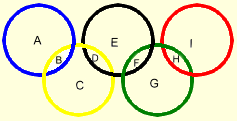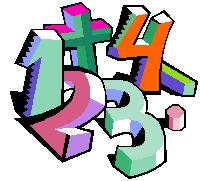What's New - February 2002
[Home]
|
February 21: 2002: From an old ACM Programming Contest, here's a problem I call Slimps, Slumps and Slurpies. These are strings of characters following certain formation rules. The definitions are recursive, meaning that the rules may include the terms being defined. The idea is to write a program that recognizes each type. Kind of a compiler for the "Slurp" language!
February 10, 2002: I've been playing with Doodler 2 for several days. (Doodler 1 was posted about a month ago.) Printing and rotating drawings is working fine, but kaleidoscope drawing is driving me crazy! I decided to take a break and work on a few simpler programs. One is an arithmetic drill program modeled after Arithmattack, a Javascript program posted at the Argonne National Laboratory website. My beta tester (aka wife) complained about my use of * and / for multiply and divide. That led to today's posting - a FontViewer written to find those elusive × and ÷ symbols. It could also be useful if you need the ™, ©, ®, or ± symbols which are buried in most fonts. I used the OnDrawCell event exit to display fonts in a Stringrid, so decided to post it over in Delphi-Techniques as an example of this Stringgrid drawing technique.
|

 February
15,2002: What would the Olympics be without rings? Here's
an
February
15,2002: What would the Olympics be without rings? Here's
an  February
13, 2002: Here 's the
February
13, 2002: Here 's the